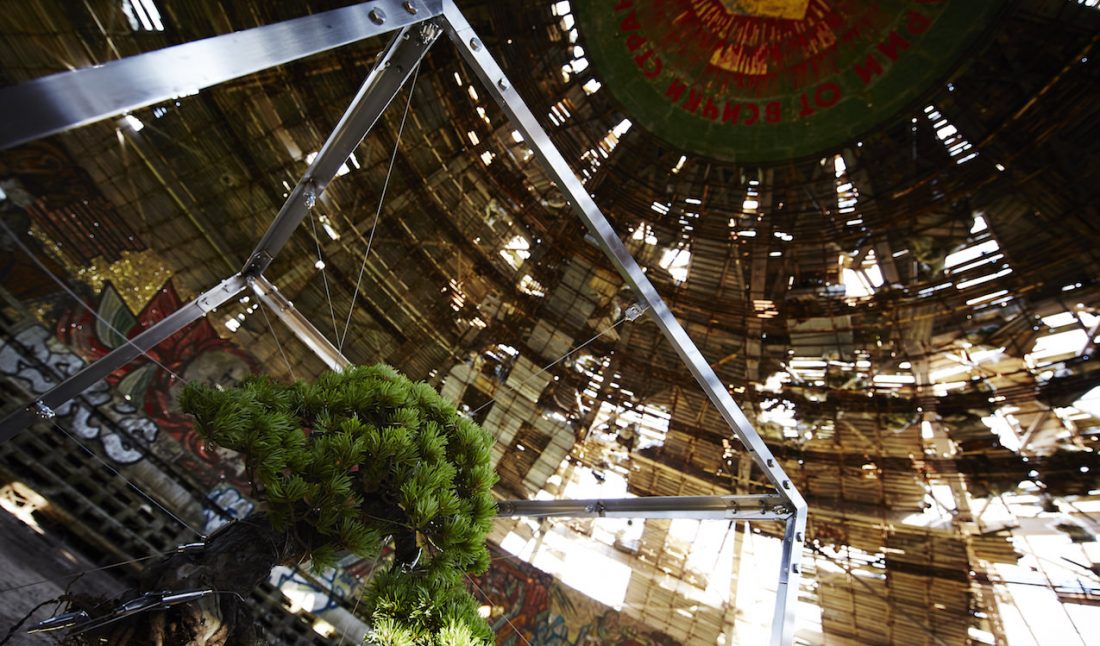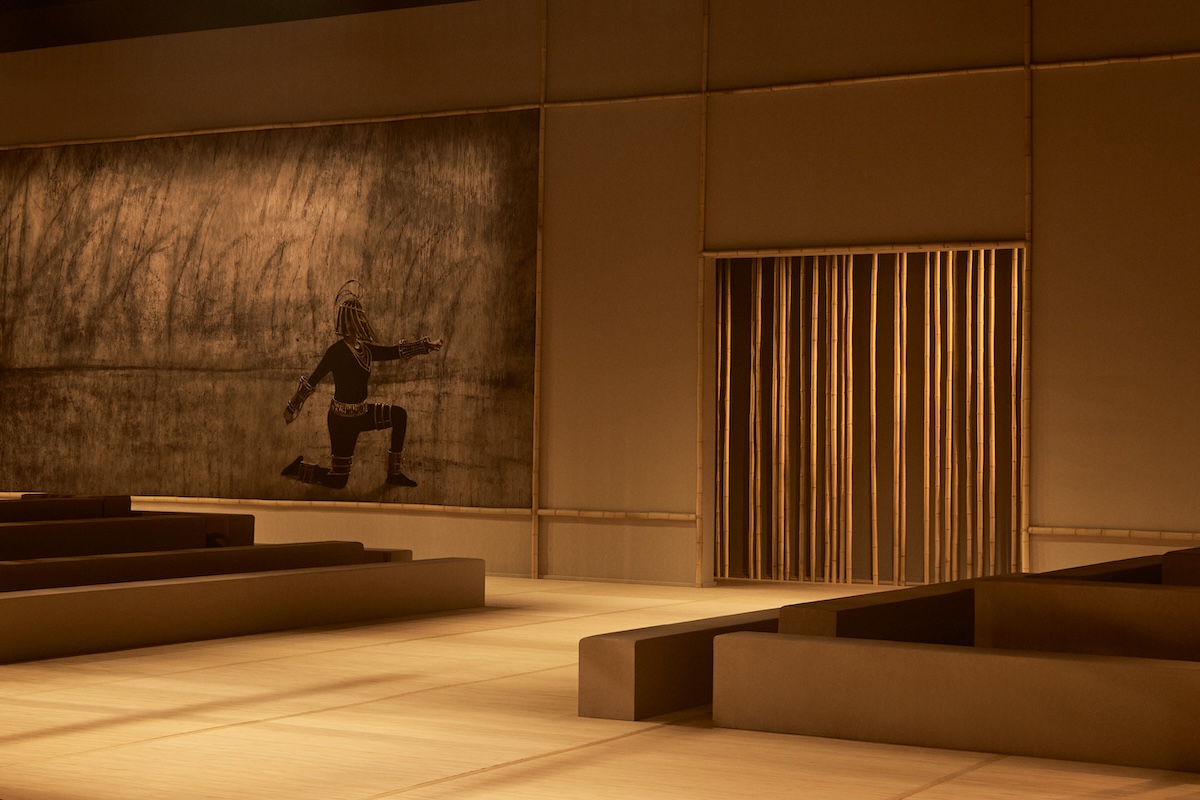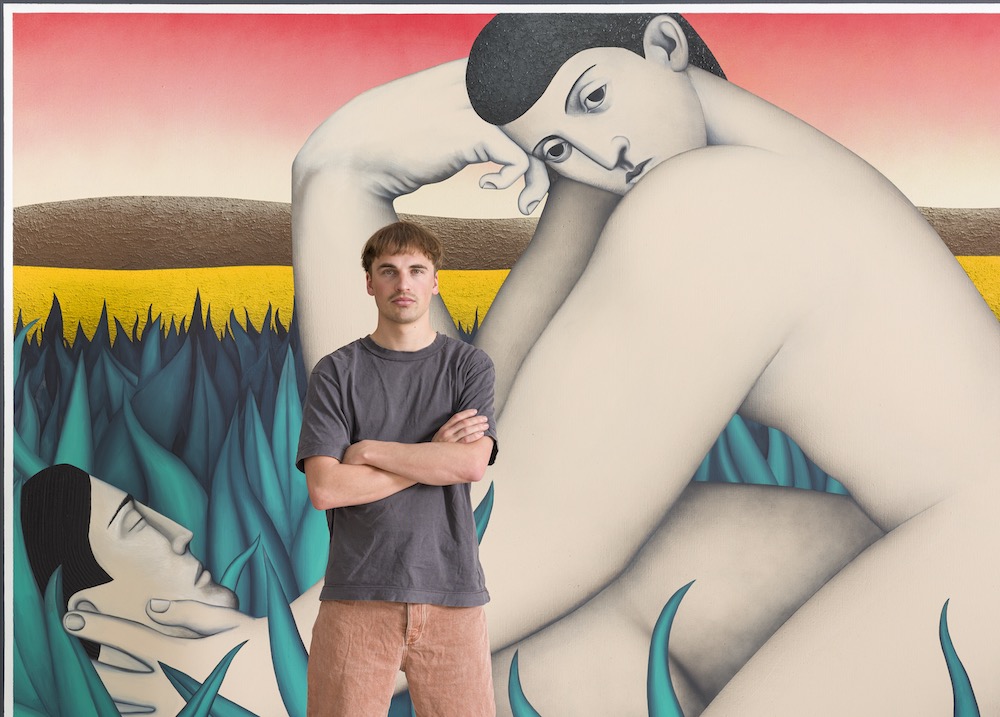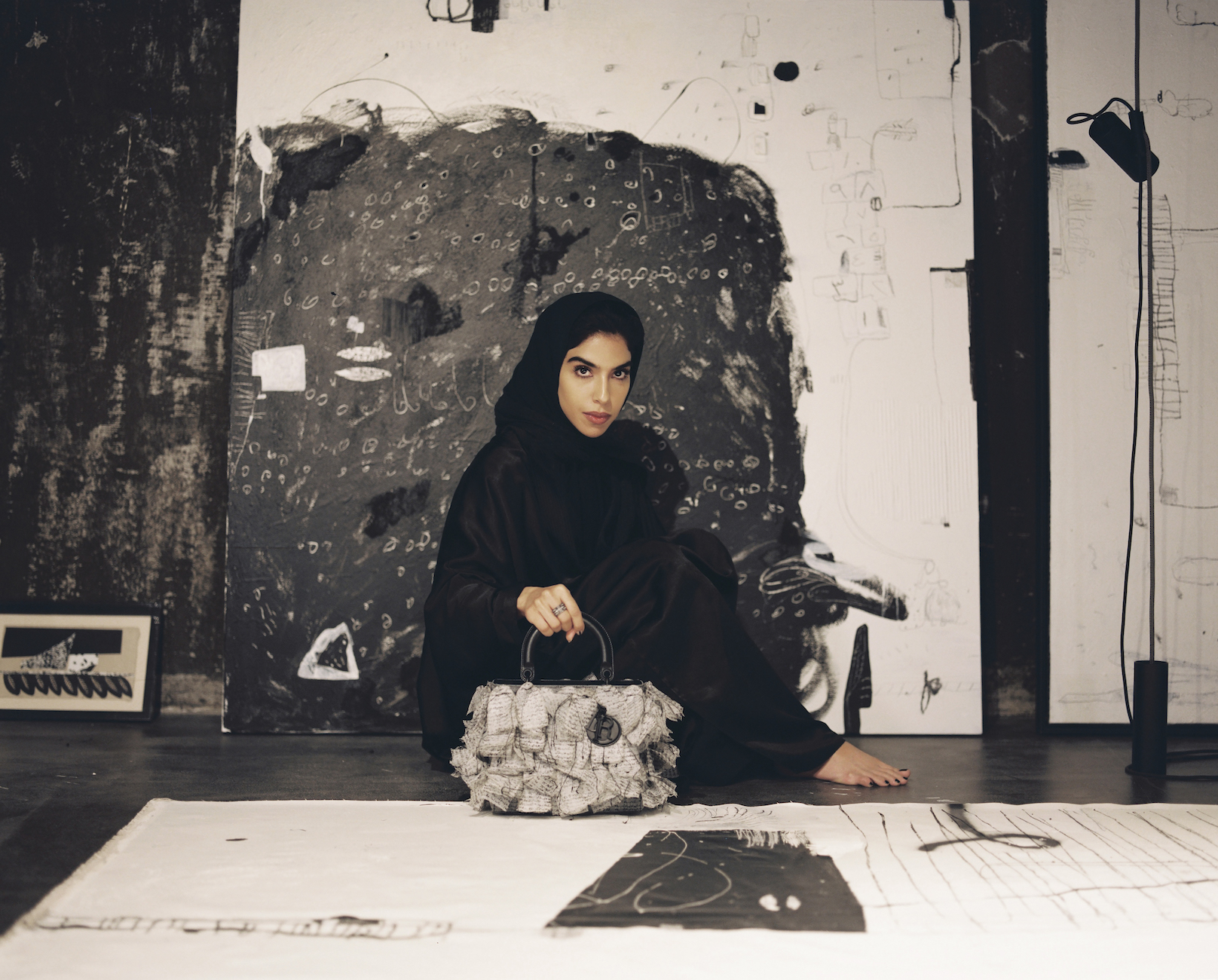Last week, an exhibition of new work by Japanese floral sculptor Azuma Makoto opened at Dallas’ Zhulong Gallery entitled “Shiki: Landscape and Beyond.” His images of suspended trees (from root to treetop) in steel frames placed in extreme settings are both stunning and puzzling. The artist came to found the genre of botanical sculpture after founding Jardins de Fleurs, an “haute couture” flower shop in Tokyo. He has since gained international recognition and collaborated with luxury and fashion brands like Boucheron, Dior, Hermès, Dries van Noten, and more. Whitewall spoke with the artist about what it’s like creating art with live material.
WHITEWALL: As the owner of Jardins des Fleurs flower shop, how did you turn to art?
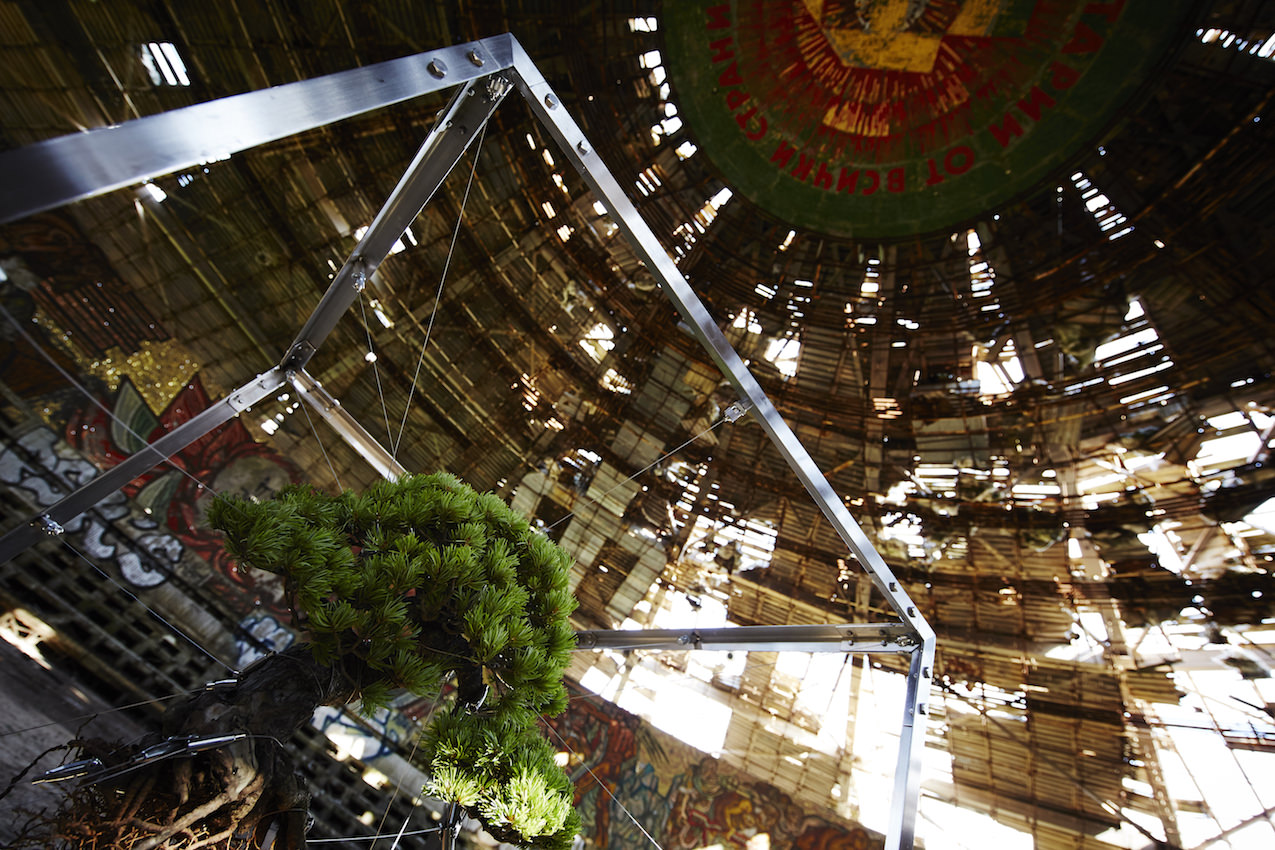 Courtesy of Zhulong Gallery
Courtesy of Zhulong Gallery
AZUMA MAKOTO: I originally came to Tokyo aspiring to be a musician, but since that alone could not pay the bills, I took up a part time job working at a shop that served as a middleman between a flower wholesaler and retailer. There, I was drawn in by the attraction and expression that the world of flowers reveals almost second by second as they bloom and then wither away. While I can’t really say that I wasn’t planning specifically to become an artist, what I sought at the outset was to find the relationship between the flowers, our customers, and myself, which gradually changed to wanting to seek the relationship between just the flowers and myself. It then came to be that I started to create artwork drawing inspiration from that relationship.
That being said, my attitude towards plants and the creation of my work is the same regardless of whether it’s from a standpoint of being a florist or being an artist. Either way it’s expression through the use of the naturally occurring beauty of different flowers and plans, and I always seek to create works in which, through the application of human touch, I can transform them into something that contains a new value that wasn’t there before. Since I am taking the lives of these flowers and plants in order to create, I strive to express a sense of reverence for life in my works.
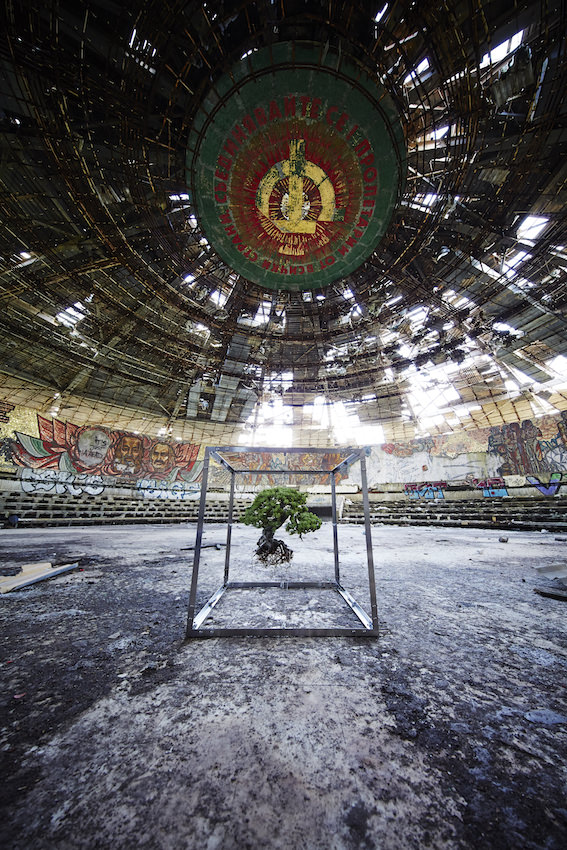 Courtesy of Zhulong Gallery
Courtesy of Zhulong Gallery
WW: What is your process like when you create a new work? What is the starting point, typically for you?
AM: First, I start with a plant as my base. Rather than searching around for something to express, I first think about how grateful I am to have found myself in this moment with this plant, consider it quietly for some time, and listen carefully to its voice. Then, I think about what kind of expression the plant is offering and how I might best show it – this is the start of my work. There are some times that I have an image in my head that I sketch out onto a concept sheet or a blackboard, but for the most part I create my work primarily from getting inspiration directly from the plants themselves.
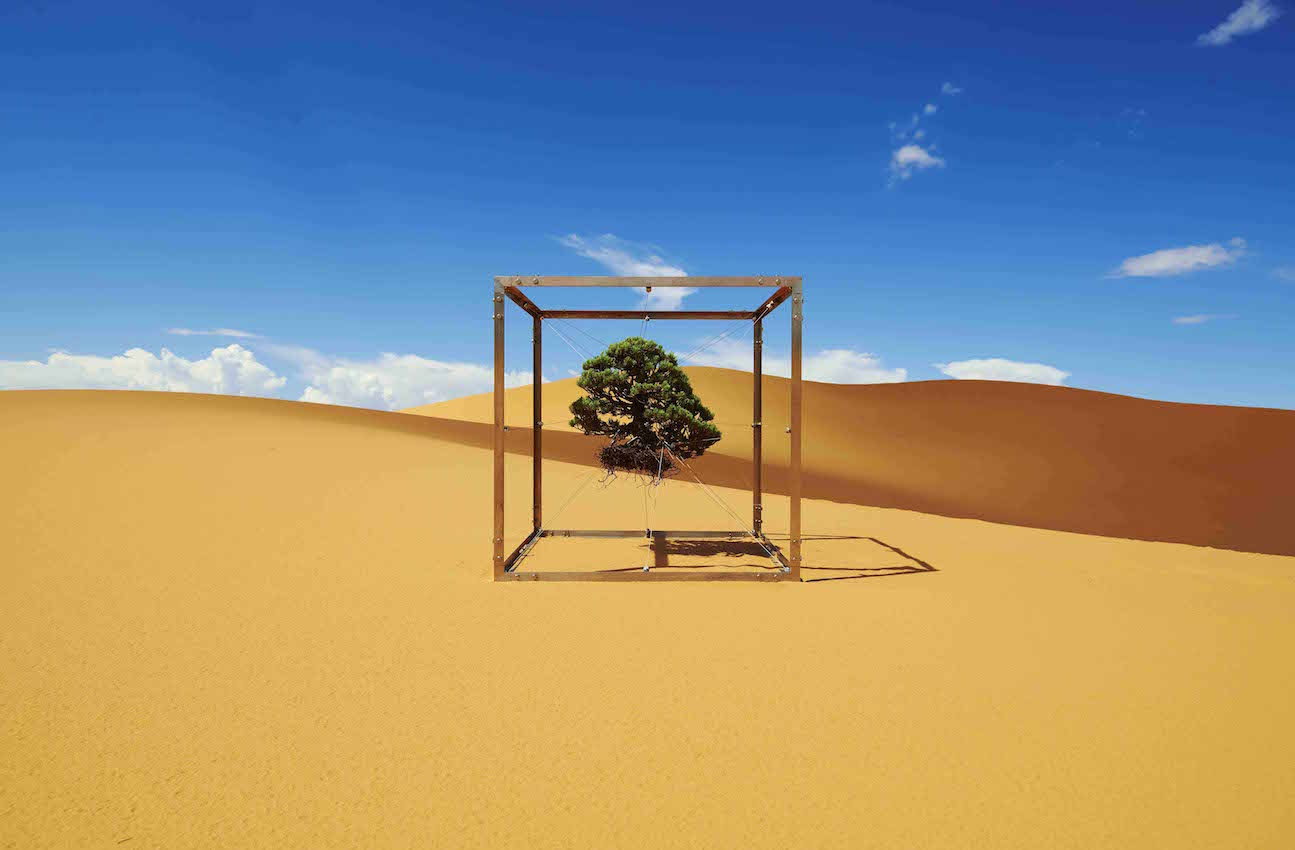 Azuma Makoto, SHIKI I x Sand Dune II, 2015. Archival photographic print, 40 x 62 in. Edition of 3 + 1 AP
Azuma Makoto, SHIKI I x Sand Dune II, 2015. Archival photographic print, 40 x 62 in. Edition of 3 + 1 APCourtesy of Zhulong Gallery
WW: Do you have a favorite plant to work with?
AM: All plants have their own special charm, so there is no selecting just one. When creating a work, I use plants that have a sense of vitality and life around them regardless of the particular type. I use plants that seem like they are just on the brink of bursting, overflowing with the sense of tension of being just one second away from exploding.
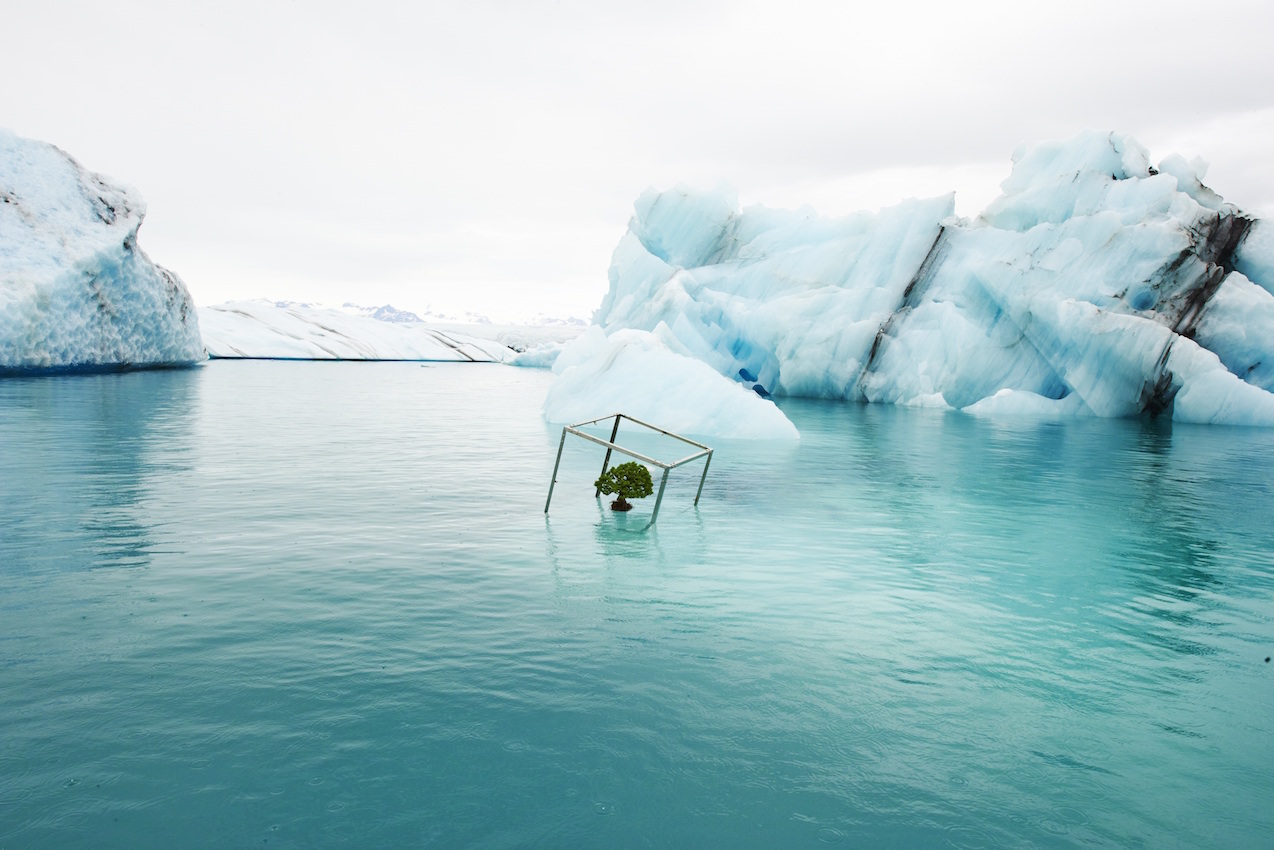 Azuma Makoto, SHIKI I x Glacier I, 2015. Archival photographic print. Edition of 3 + 1 AP
Azuma Makoto, SHIKI I x Glacier I, 2015. Archival photographic print. Edition of 3 + 1 APCourtesy of Zhulong Gallery
WW: What are some of the challenges of working with living material?
AM: You could say that the life of a flower is exceedingly brief, even transitory and ephemeral. Because of this, the meaning of a “moment” in the life of a flower is much heavier and precious than that of a person. While there is no need for me to purposefully express concepts like “rotting” or “decaying” directly as such, these elements are present in all of the works I create, and truly without those elements there wouldn’t be a work to start out with.
Plants are living things that are always in a state of change, and above all else flowers in particular have an extremely short lifecycle. It is entirely plausible to have a flower that is nothing but a bud in the morning bloom just a few hours later, or to have a flower in full bloom begin to wither in the blink of an eye. 365 days a year I am surrounded by various plants and flowers, constantly considering how to further pursue the beauty of these, how to capture a side of them that no one has ever seen before. Further, in order to bring forth the beauty of combining this organic matter with current technology and man-made items, in order to draw out the sense of vitality of these plants at an even greater scale, I pair these natural elements with human-made elements to create the final work. I strive to increase the sense of value that people place on plants and flowers as a medium and convey this to as many people as I can.
WW: What was it like shooting your arrangements in space for “Exbotanica” project?
AM: It felt like I was arranging the flowers in the very earth itself; it was an incredible experience. It was the polar opposite of the usual – my curiosity as to what it would be like to look down from above to see flowers arranged on the Earth itself was one of my primary sources of inspiration.
WW: What inspired you to combine flowers with man-made structures?
AM: I tend to use methods that reveal the true beauty of a particular plant by marrying the natural form of the plant with man-made items. By adding a sense of the “present” to the expression of the work (whether “present” be bound in a physical or timely sense), I can transform the final product to be an embodiment of a new life. As I mentioned above, I strive to present in my work the natural state of beauty of varying plants and flowers, so I am constantly thinking how to add even greater value to my work by adding in human elements. I always get my inspiration from the plants themselves.
Things such as the unexpected feeling of the change in seasons while walking from home to work in the mornings, or encountering a type of plant I’ve never seen before, or surveying a stack of freshly stocked flowers become my inspiration for a work that no one has seen the likes of yet and drives my creativity.
WW: What it like collaborating with top fashion houses and brands like Perrier-Jouet?
AM: After receiving a request for collaboration from the brand, I consider everything from what I am looking to express via the plants and how I will plan to make that happen, to what the scope and cost for the project will be. That being said, regardless of how much of a top-level brand it is, if the request doesn’t take into account or accept in its vision plants and flowers as living objects, I will not move forward with the collaboration. Top fashion brands, however, do tend to have a consciousness of and respect towards artisans and craftsmanship – this resonates with me very well, so I have found these collaborations to be very exciting and motivating for me. In this type of collaboration, there’s a three-faceted relationship formed between the client, the flowers, and myself in the final piece, and in making all three elements flow in harmony the work ends up being different from what I would have produced on my own. In doing this I constantly find new discoveries and new motivations.
WW: What can viewers expect from “Shiki: Landscape and Beyond”?
AM: “Shiki” is an experimental series in which you see a new beauty created by the friction of the naturally occurring twisting shape of the pine tree and the regulated, defined sense of human-made cubical structures. “Shiki” intentionally puts flowers and plants into places in which they would never be seen naturally and seeks to find what type of “landscape” that phenomenon creates. This becomes not just an ordinary type of landscape; but rather a new spectacle created by the fusion of the space with “Shiki.” I want viewers to feel that in this spectacle, they can see even more than just what meets the eye.
“Shiki: Landscape and Beyond” is on view through December 5.







